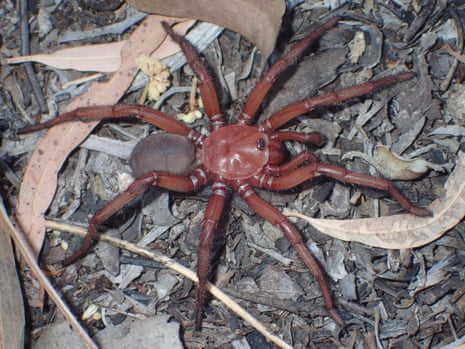A new and rare giant spider has been found hiding beneath a trapdoor made of silk and soil west of Brisbane.
The giant trapdoor spider, Euoplos dignitas, was discovered by researchers involved in Queensland Museum’s Project DIG, which has been running for the past four years to understand more about the state’s biodiversity.
What excites the lead researcher, Dr Michael Rix, most about the discovery of the new creepy crawly, found in the black soil around Eidsvold and Monto, west of Bundaberg, is its size. The females, which can live for over 20 years in the wild, can reach about the size of a 50 cent piece.
“It’s very big for a trapdoor spider,” said Rix, who is also Queensland Museum’s principal scientist and curator of arachnology. “The females of this species can get up to five centimetres in body length.”
The new species, the discovery of which was published in the Journal of Arachnology, plays an important role in the leaf litter ecosystem, helping to control insect populations.
But Rix said the researchers found the species is likely threatened due to its small natural range, which is confined to a small area, and the amount of woodland that has been cleared in the region.
“We think they’re probably in a bit of trouble … but more work needs to be done to get a better handle of how much,’ he said.
The female spiders spend their lives underground, while the males – which are honey red in colour – leave the burrow after five to seven years to find a mate in another burrow, Rix said.
During the day, the trapdoor the spiders live beneath is closed. But at night, the spider sits just under the ajar door, waiting to grab insects as they scurry by.
The spiders use venom to subdue its prey, but Rix said they are not dangerous to humans.
after newsletter promotion
“The bite might be physically painful because of their size, but they’re not dangerous,” he said.
The spider has been named Euoplos dignitas, the former meaning a group of trapdoor spiders, and the latter meaning dignity or greatness which is a nod to the size of the spider and Project DIG.
Rix said the next steps for the researchers will be determining where other populations of the spider exist in central Queensland.
“It is a really important process in both understanding what’s out there, but also as a step towards conservation,” he said.
